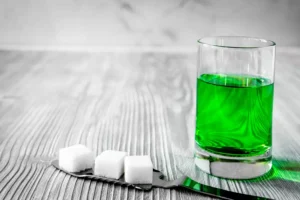This means a person may take a higher dose of IV drugs in an attempt to regain the same level of “high” as before, but the drug won’t actually provide the high due to the drug’s ceiling effect. Inspect all immune globulins upon delivery and monitor during storage to ensure that the appropriate temperature is maintained. If TRALI is suspected, perform appropriate tests to determine whether antineutrophil antibodies are present in the product or in patient serum.
Mental healthcare needs
As seen in the sections above, intravenous drug use has a plethora of potential complications. As such, the ED evaluation should be tailored to the specific complaint and presentation. Hematogenous spread, extension of SSTI, or direct inoculation into muscle also puts PWID at risk for pyomyositis, an abscess-forming infection of skeletal muscle (34). Common locations include the deltoids, psoas, biceps, gastrocnemius, gluteals, and quadriceps (34). The incidence of IVDU cases presenting to the emergency department of a single urban center with an upper extremity infection in 2005, 2010, and 2015.
Meth, cocaine and other stimulants
- In those with HIV, have a high index of suspicion for CMV and toxoplasmosis retinitis, as well as cryptococcal and MAC uveitis (6).
- In comparison, at recommended VIGIV dosage of 6000 units/kg, patient may be exposed to up to 0.18 g/kg of protein.
- The number of patients presenting to our emergency room with an IVDU-related upper extremity infection more than doubled in 10 years, and our rate of upper extremity infections related to IVDU rose to 10.3% in 2015 (up from 5.2% in 2005 to 6.3% in 2010).
- Endocarditis is an infection of the heart valves that is caused by bacteria, fungi, and other infection-causing microbes that enter the bloodstream during injection and build up around the valves of the heart, weakening them as well as other parts of the heart muscle.
Due to the potential to confuse pseudoaneurysms as abscesses, consider US or contrast CT in all painful masses in PWID, particularly in the groin, and if pulsating (6). However, note that in venous pseudoaneurysm, a pulse or bruit may be absent (41). Opportunistic infections due to HIV in PWID, endocarditis, CNS infections, pneumonia, skin and soft tissue infections, and septic phlebitis will be discussed later in relevant sections of this article. In 2005, there were 1,251 total patients who presented to the ED with an upper extremity infection; 794 were male (63%) and 1,022 (87%) were white. A total of 1,186 patients presented to the ED with a non-IVDU upper extremity infection and 65 had an IVDU-related upper extremity infection (rate, 5.2%).
PRE-EXPOSURE PROPHYLAXIS FOR HIV
Harm reduction strategies targeting SBI will need to be comprehensive given multiple potential means of introducing bacteria into the process and fluid nature of the risk (during and between separate injection events). The typical medical professional offers minimal information (i.e., clean needle use, avoid needle sharing) for safe injection in the context of complex and varied behaviors. PWID interviewed in this study demonstrate what is likely widespread basic understanding of safe injection practices. In addition, PWID interviewed noted information about “safe” practices often travels via word of mouth rather than from medical professionals.
Advice to Patients
- Despite perceived safe injection practices among PWID, limited practice of these behaviors and knowledge deficit on how to reduce their risk of drug-injection-related SBI was common.
- There is as yet no vaccine for hepatitis C, and antibodies are not protective—that is, they don’t make you immune to re-infection as with HBV.
- If you do start using the drug, it’s likely you’ll lose control over its use again — even if you’ve had treatment and you haven’t used the drug for some time.
The crippling effects of early and repeated severe emotional trauma are often all too apparent. High levels of anxiety and poor motivation from depressive illness may contribute to failure to attend appointments. ‘Needle phobia’ may paradoxically aggravate the problem of venous access caused by physical damage to veins. This is understandable when one complications of iv drug use realises that most will have witnessed an overdose in others, and which is the rationale for providing naloxone injection kits. The same healthcare needs of the general population apply but services should be flexible to adapt to specific need.
- Additionally, it was described by several participants that even though harm reduction knowledge may be present, priority of risk reduction strategies may be diminished as a consequence of drug high.
- Skilled management of ulcers by nursing staff, and use of stockings and compression bandages, are also necessary but again require regular, periodic clinic attendance to be effective.
- Septic pulmonary emboli can seed from injection-site infections and tricuspid valve endocarditis and usually present with high fever and symptoms suggestive of pulmonary emboli.11 Lung abscesses result typically from aspiration, frequently due to K pneumoniae13 or septic emboli.
- Appearances in intravenous drug users can be atypical, because the skin, venous, and lymphatic systems are damaged by frequent trauma and consequent low-grade infection.
- In comparison, the non-IVDU cohort consisted of 926 males (57%) and 1,298 were white (84%).
- These drugs can cause severe intoxication, which results in dangerous health effects or even death.
- There is a range of other specific physical healthcare problems that may go unnoticed in general practice.
PWID would benefit from pervasive messaging throughout https://ecosoberhouse.com/ the medical system, provided through a more complex and in depth understanding of the potential risks and prevention strategies. Compartment syndrome is a condition in which the circulation and function of tissues within a closed space are compromised secondary to increased intra-compartment pressure. It typically presents acutely and unilaterally as a result of trauma and if not quickly managed may result in cellular anoxia, muscle ischemia, and tissue necrosis 1.





